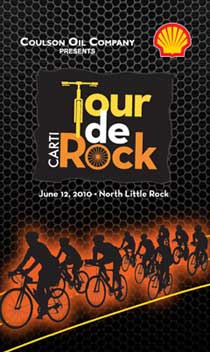“Which Pace Group Should I Ride in?”
To this we ask, what pace can you average consistently including stops? 16 mph? Definitely should ride in the B training group. (You should know they claim to be “the cool group that has the most fun!”)
Do you run about 19? That's a tough one. To meet the need of faster cyclists, the A group’s goal is to average 20 mph on the way out and possibly faster on the way back in. You could start in A and then merge later with the faster B riders for a bit. Please understand if the group maintains their faster pace.
“Why do I need to set my pace?”
The training rides are geared (yes, pun intended again) for cyclists who have certain distance and completion time goals. Why? The Tour de Rock has a time limit for completion of the 100-miles. We have to train at certain paces to make sure we finish before the cut-off.
“What if I can’t keep up?”
No worries. Typically, our groups break up into smaller cells as the roads get longer. Don’t get mad or feel bad, just merge in where you are most comfortable. Remember, # 6 of the 10 Commandments of Group Cycling (previous post):
Don’t become upset if you get dropped. Remember that group riding provides not only company, but also raises the awareness of cycling with motorists. Even if you aren’t with the group, knowing that other cyclists are on the road at the same time brings you safety.“But I want to go faster.”
Please feel free – catch the next fastest group. We want everyone to challenge themselves to ride a faster pace or go a longer distance - if that's what you want to do. But keep in mind, the rest of the group may not be able to or want to go faster than the posted pace.
“No, I just want to learn to RIDE faster!”
Okay, here’s a Speed Work Tip - on a flat-to-rolling road, choose an object, like a mailbox, 50 meters out. Jump out of the saddle to sprint, then sit and hammer to the marker. Recover three minutes and repeat twice. Do the same sprint/recovery sequence with an object 100 meters out, and again with one 200 meters out. Use your small chain ring for the 50s; shift to the big ring for the 100s and 200s.
As a reminder - the TDR Training Rides have three pace groups:
“A Group”: averages 20-plus mph – seriously. (Last weekend, on the way in, one group broke away and I heard averaged 26 mph. Others, were more like 22 and 20.Overall, there is a “no drop” policy. This means there will always be someone behind you to ensure you make it back in to the start. Always. (The A group has the B group. The B group has the C. And, the C group has the sweep.)
“B Group”: averages 16-18 mph.
“C Group”: averages 14-16 mph.
For whatever ride you are training for this season, we hope to help people meet their goals. If you’ve got a different pace or still unsure which group to ride with, let us know. If we can accommodate you, we certainly will do our best. Send an email to carti.tourderock@gmail.com.









